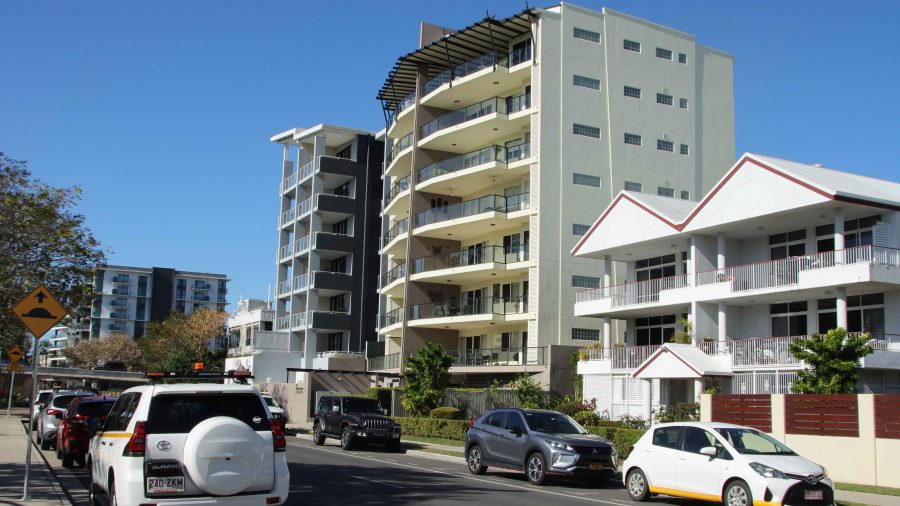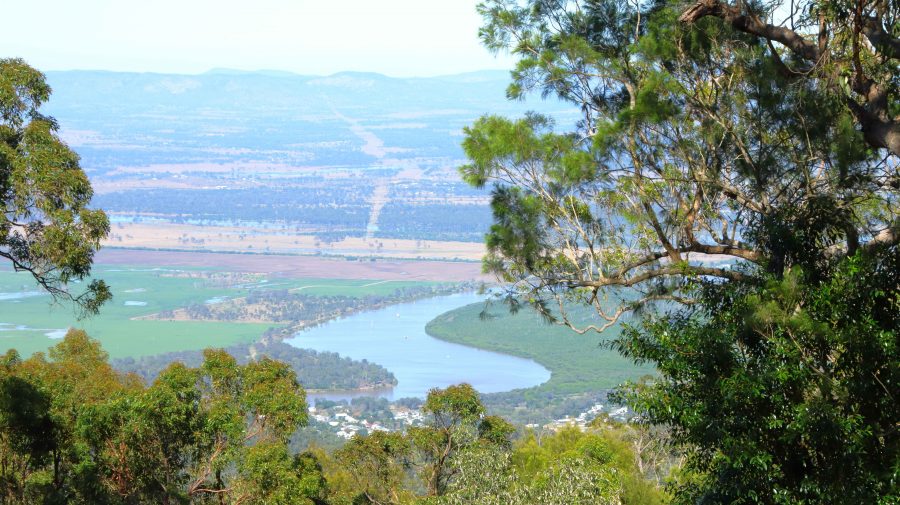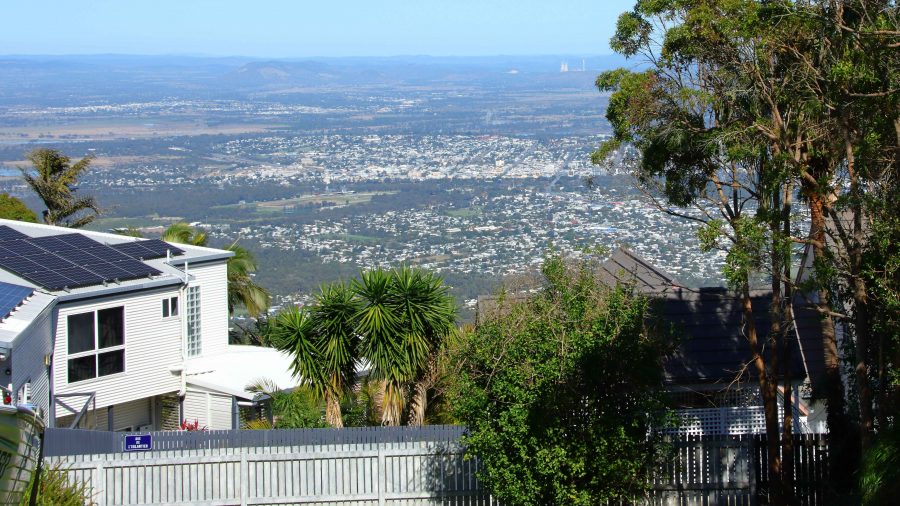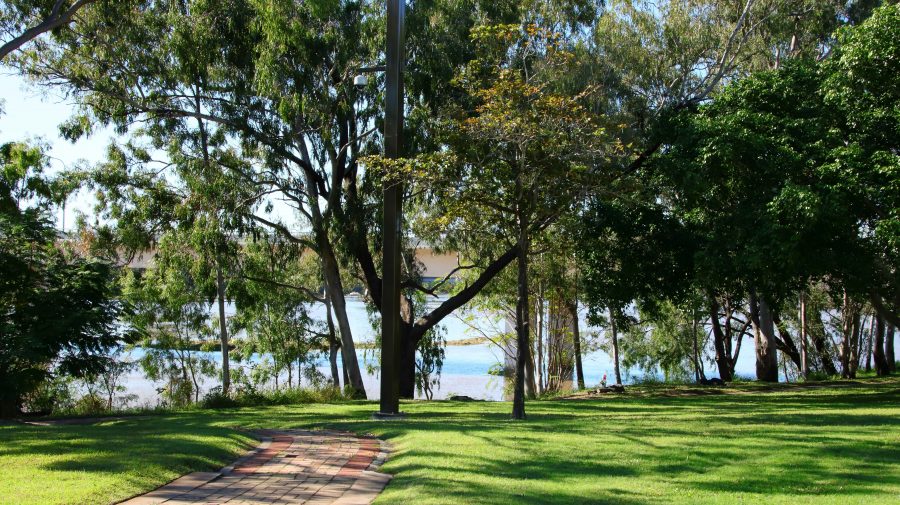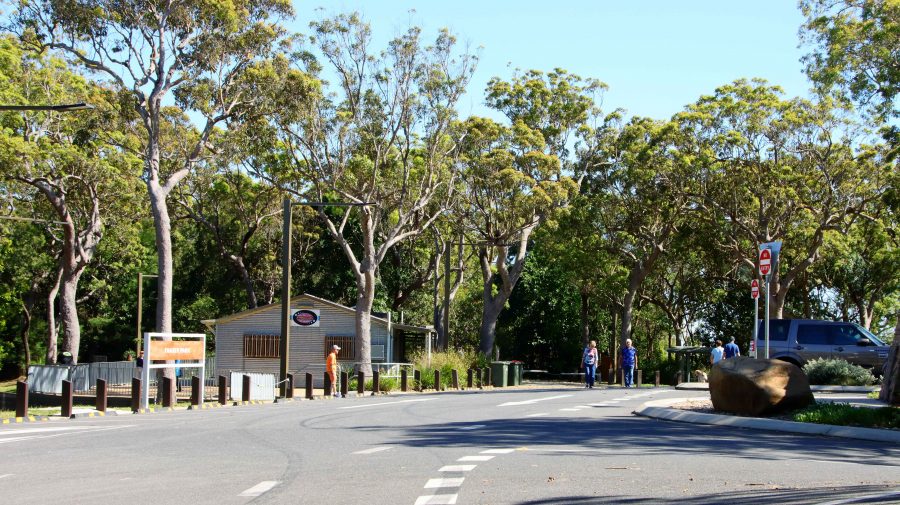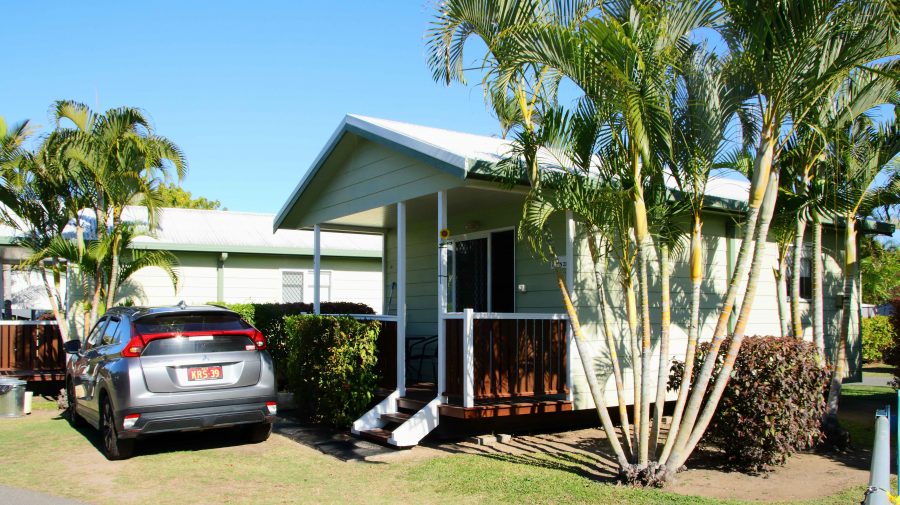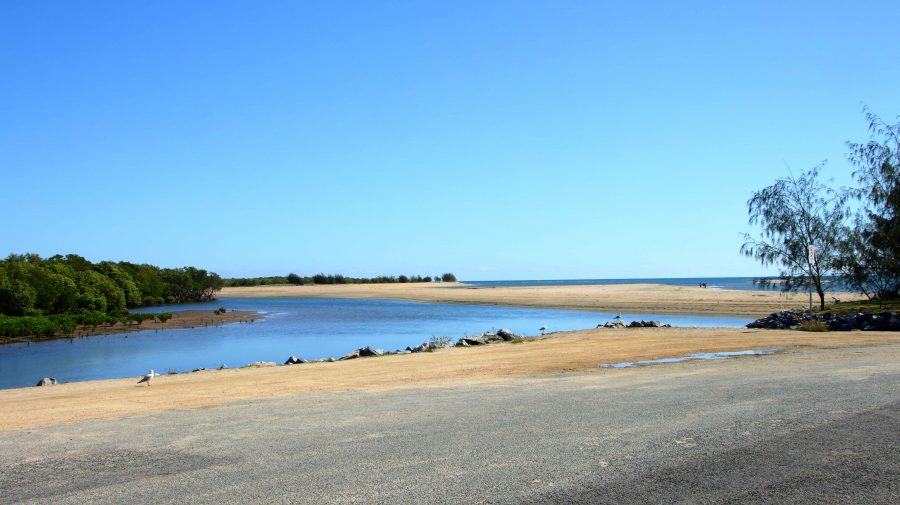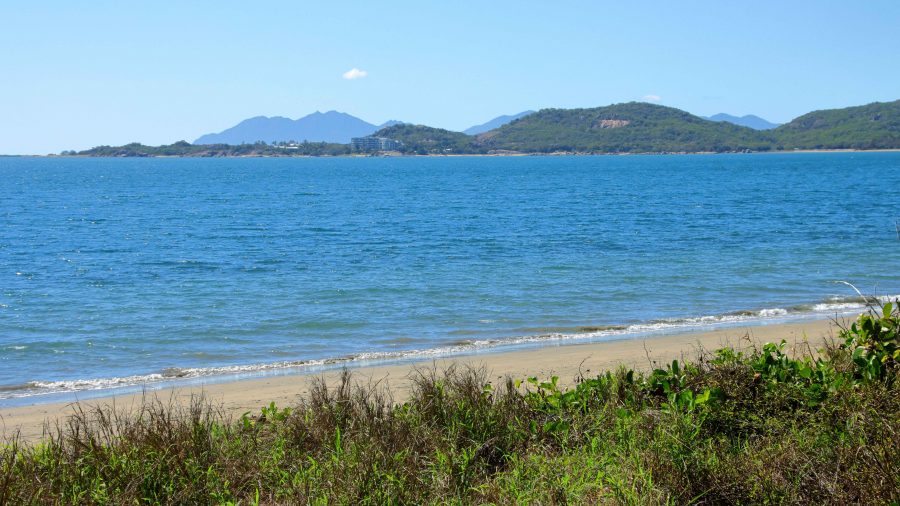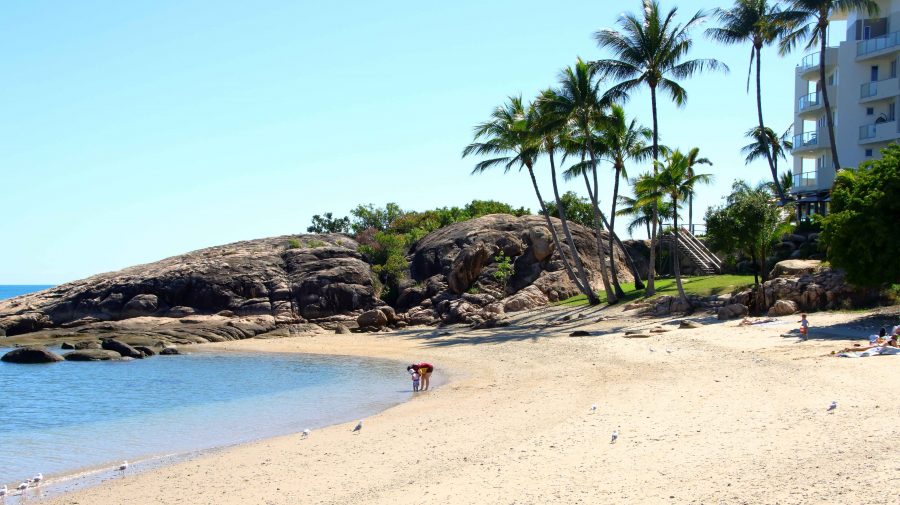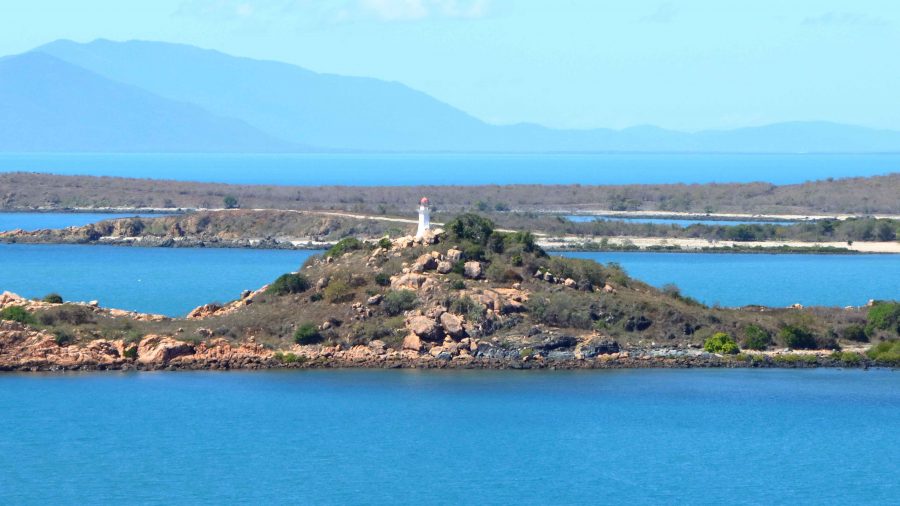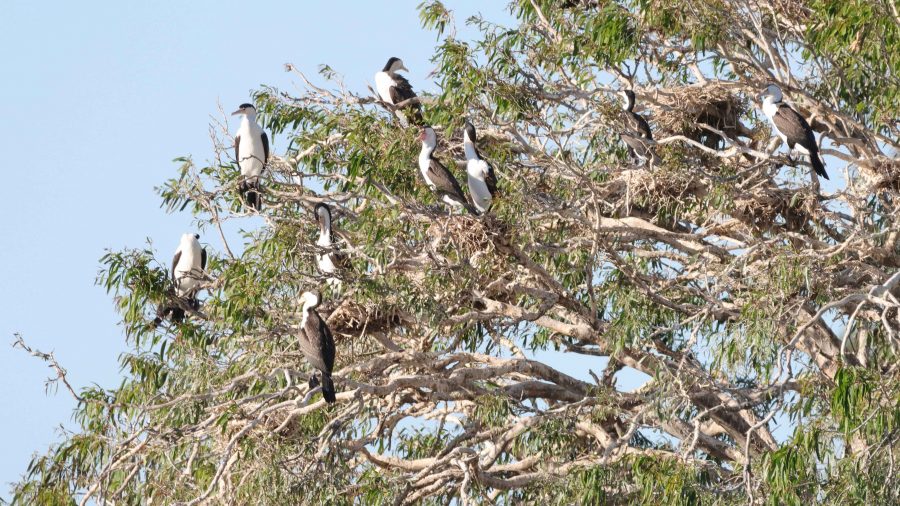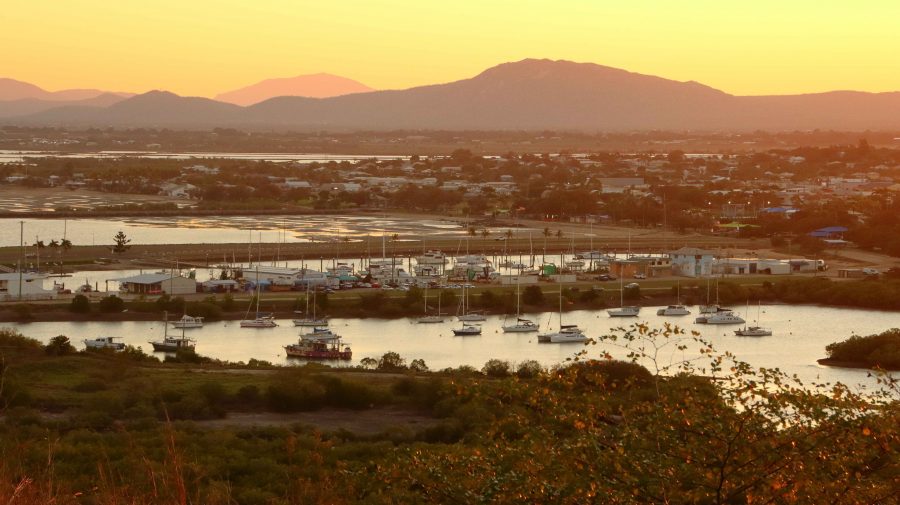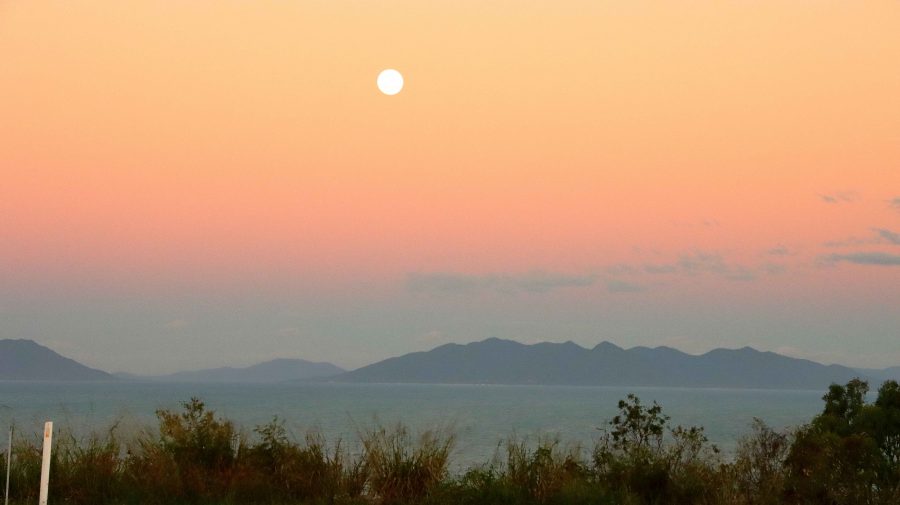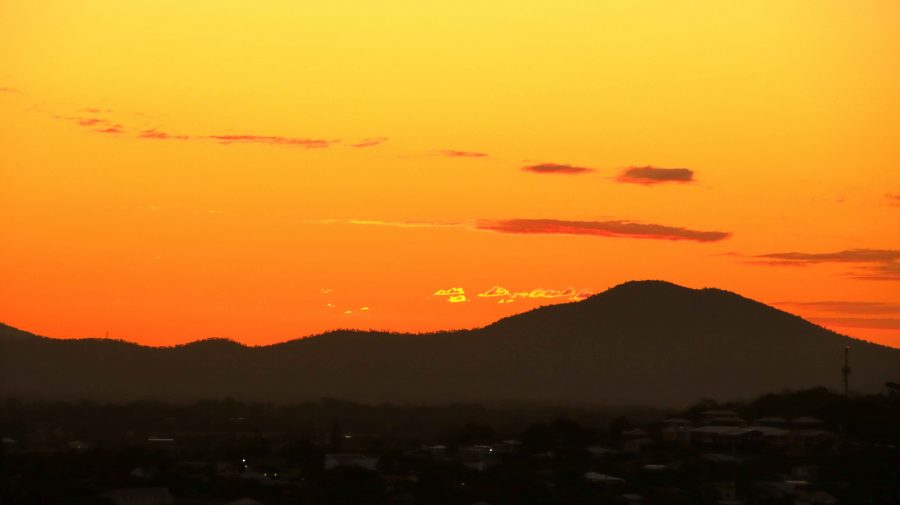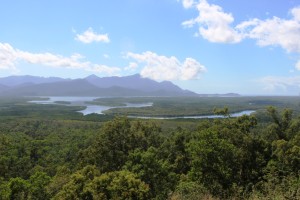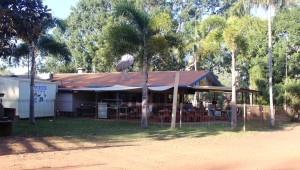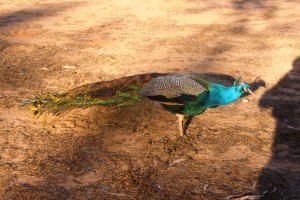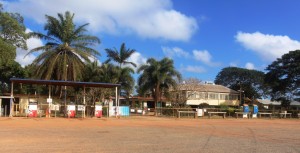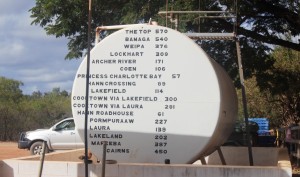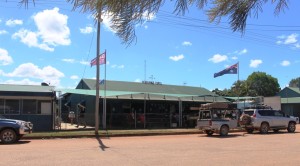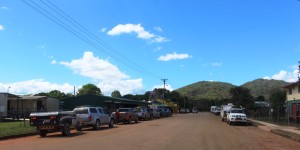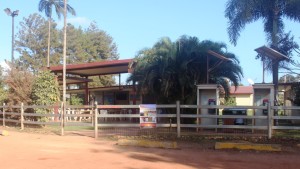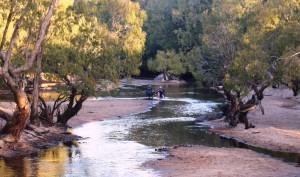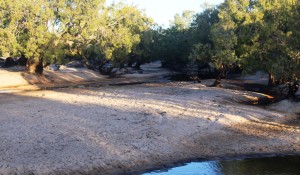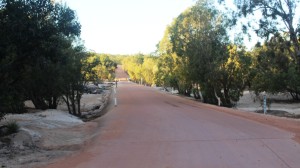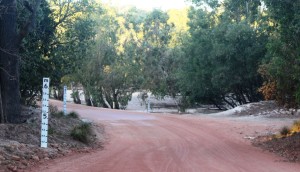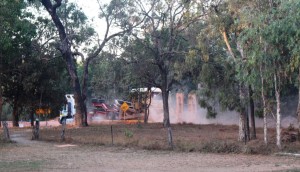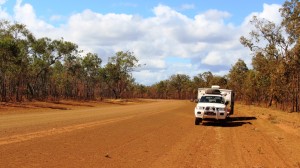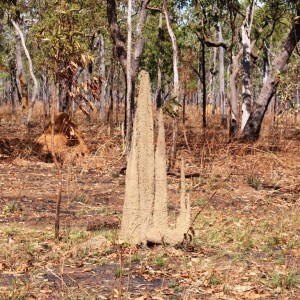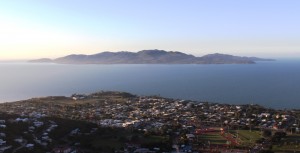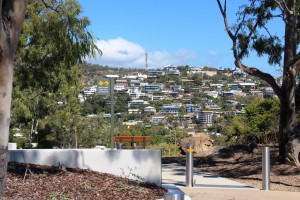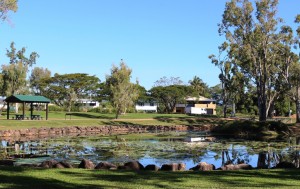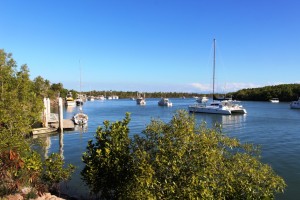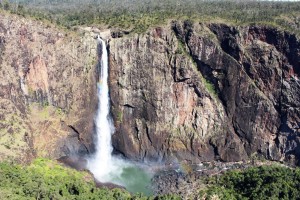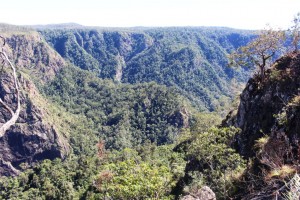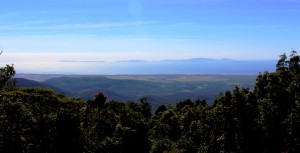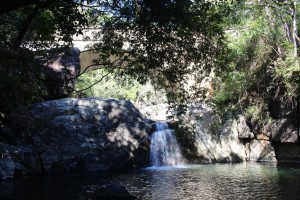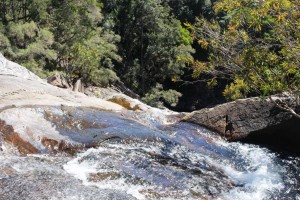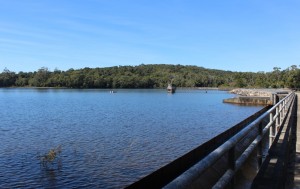In the days before we set off for Far North Queensland, my Facebook news feed had regularly thrown up tourism advertisements from Rockhampton tourist authorities promoting the magnificent views available from the lookout at Mount Archer and a tree top walk on the same mountain top. That all sounded good, so after a short drive along the banks of the Fitzroy River on the South side, we crossed the river and took the road to Mount Archer.
Much of the mountain is a national park, the boundaries of which commence at the bottom of the hill. Like most national parks the roads have a 40-kph speed limit. We were immediately behind a tourist bus which was climbing the mountain at 20-kph. The road is very winding but after a while the bus driver signalled us past and we were able to return to the speed limit.
We reached the summit, but what a disappointment! When the lookout was first built the views probably were spectacular. But it seems that the influence of Green councillors has precluded trimming of the trees, to the point where they obscure most of the view. One of our fellow visitors was lamenting that he had not brought his chain saw,
Of the treetop walk we could find no sign, nor any mention of it on the signage at the park entrance. The best views are to be had from the small area of residential development that shares the mountain top with the national park and enjoys permanent spectacular views.
We had booked a caravan park cabin in Bowen for two nights. It was a while since we had spent much time in Bowen, which is an attractive regional centre, with some excellent tourist facilities. The cabin was in good condition, fairly new and comfortable. It was located at the Queen’s Beach Tourist Village, which was packed with grey nomads.
Bowen is located on a peninsula and has both a northern and southern aspect. Horseshoe Beach at the north-eastern tip provides an easterly aspect as well.
On the day we had available, we started at the mouth of the Don River and worked our way east to Horseshoe Beach and Rose Bay. The day was perfect and holiday makers were making the most of it. We made a quick call at Mullers Lagoon to check for bird life before visiting the main town centre. On our last visit here we still had a caravan and stayed at the caravan park by the harbour.
Finally, we drove to the summit of Flagstaff Hill for the views over the town and back south over the bay to Cape Gloucester and Gloucester Island, before returning to the cabin for lunch and a rest.
At about 4.00 PM we returned to Muller Lagoon for some bird photography and from there went back to Flagstaff Hill to watch the sunset from that vantage point. It wasn’t a great night for sunset colour, as there was almost no cloud cover to the west, but to watch the changing light on Bowen Harbour and the moon rise over Gloucester Island was not a bad substitute.
On successive trips north we have noticed the increase in horticulture and market gardens, that seem to be expanding around the larger towns and occupying some of the land formally used for sugar cane production. Bowen has mangos aplenty as indicated by the Big Mango at the southern approach to the town, but tomatoes are now very much in evidence. I wonder if we will ever see a Big Tomato at the entrance to the town.
Bowen is a coal town with many of its residents employed at the gigantic coal loading facility at Abbott Point, just 30 km to the north. In addition, I would think it an ideal location for fly in fly out employees in the mines of the Bowen Basin just over the range to the west. Perhaps drive in drive out as well.
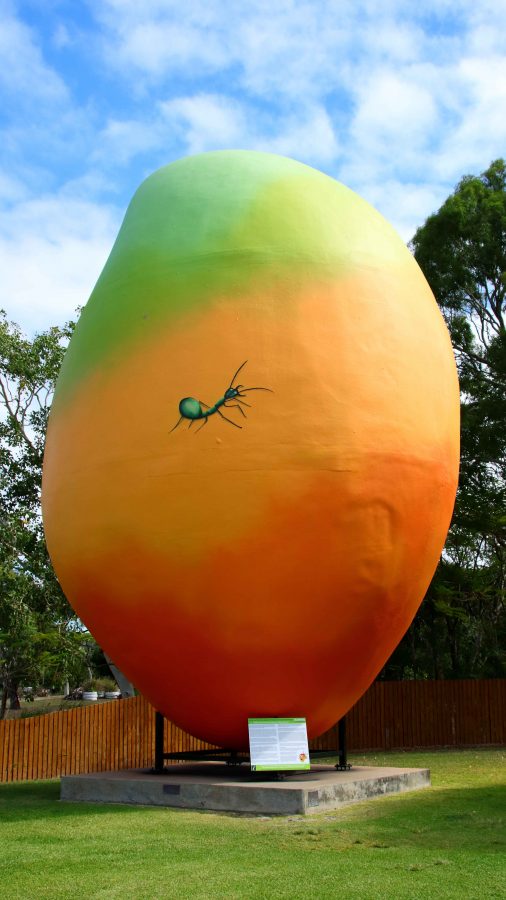
On Tuesday morning we departed to Cairns under cloudy skies. By Townsville the sky had darkened and as we passed through Ingham and approached the mountains near Hinchinbrook Island, the rain started to fall in earnest. An umbrella was required to leave the car for lunch at Innisfail, during what was, according to the news, a 50 mm fall of rain.
Just south of Cairns the rain abated, but returned after we had settled into our motel unit in North Cairns. When it rains during holidays you just have to deal with it. The greater problem was that in booking I had failed to specify a ground floor room, so Ruth had to make it up fourteen steps. We dealt with that problem, for the four nights that we were there, by going out in the morning and returning at the end of the day, when all activities were done.

